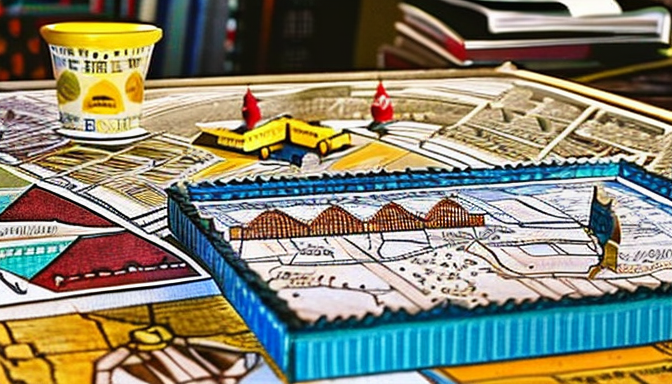Karachi, a city bustling with life, has a story etched in its old maps. These vintage treasures are more than just paper; they are windows into the past. Imagine flipping through a book of maps that tells tales of how this city transformed from a small fishing village to a sprawling metropolis. Each map captures a moment in time, a snapshot of the city’s growth.
As you explore these historical maps, you can almost hear the whispers of the past. They reveal shifts in geography, like the changing coastline and the expansion of urban areas. Did you know that Karachi’s first official map was created in the 18th century? It was a simple representation, but it laid the groundwork for future developments. Over the years, maps have documented the influx of people from various backgrounds, showing how diverse communities have shaped the city’s identity.
Consider this: each map is like a time capsule. They showcase not just streets and buildings, but also the stories of the people who lived there. From the bustling markets of Saddar to the serene beaches of Clifton, these maps reflect the cultural tapestry of Karachi. They remind us of the different influences that have come together to create the vibrant city we know today.
So, next time you see an old map of Karachi, take a moment to appreciate its significance. It’s not just a map; it’s a piece of history, a reminder of how far Karachi has come and the rich heritage it continues to hold.
The Historical Significance of Karachi’s Maps
Have you ever wondered how a city like Karachi transformed over the years? Old maps are like time machines, taking us on a visual journey through the past. They showcase not just streets and buildings, but the very essence of the city’s evolution. Each map tells a story, revealing how geography, demographics, and urban planning have shifted. From fishing villages to a bustling metropolis, Karachi’s maps capture every twist and turn of its journey.
Take a closer look at these vintage maps. They are not mere drawings; they are vivid snapshots of a time gone by. Imagine flipping through a book filled with maps that show Karachi’s growth from a small port town to one of the largest cities in the world. Each line drawn on these maps reflects the dreams and aspirations of its people. For instance, the transformation of the waterfront area is evident in these historical records. Once a serene landscape, it has evolved into a busy commercial hub.
Moreover, maps also highlight the demographic shifts that have occurred. They reveal how different communities have settled and influenced the city. From bustling bazaars to quiet neighborhoods, every corner has a tale to tell. Old maps serve as crucial records, allowing us to understand not just where we came from, but also how we can navigate our future.

Cultural Reflections in Mapping Karachi
When you think of a city, what comes to mind? The bustling streets? The vibrant cultures? For Karachi, it’s all about its maps. These old maps are like time capsules, offering a visual journey through the city’s rich history. They don’t just show roads and buildings; they tell stories. Stories of people, communities, and cultures that have shaped Karachi into what it is today.
Take a look at a vintage map from the early 1900s. You’ll notice how different the landscape was. Areas that are now bustling markets were once quiet neighborhoods. Each line on the map represents a change, a transformation. It’s fascinating to see how Karachi has grown and evolved, reflecting the diverse cultural narratives within its borders.
The art of mapping Karachi also highlights the influences of various communities. From the early settlers to modern-day residents, each group has left its mark. For instance, the Port of Karachi has been a melting pot of cultures, and old maps capture this blend beautifully. They showcase how trade and migration shaped the city’s identity.
In a way, these maps are like a mirror. They reflect not just the city’s physical changes but also its social fabric. As you explore these historical documents, you’ll find:
- Evidence of architectural styles from different eras
- Demographic shifts that tell tales of migration
- Changes in land use that reveal economic patterns
So, the next time you look at a map of Karachi, remember: it’s not just a tool for navigation. It’s a canvas painted with the colors of history, culture, and community. Each map is a reminder of where we’ve been and how far we’ve come.
Frequently Asked Questions
- Why are old maps of Karachi important?
Old maps are like time machines! They offer a glimpse into Karachi’s past, showing how the city has evolved over time. By studying these maps, we can understand changes in geography, demographics, and urban planning that have shaped the city we know today.
- What cultural narratives do the maps of Karachi reflect?
Each map tells a story! They reflect the diverse communities that have influenced Karachi’s identity. From colonial influences to local traditions, these maps capture the rich tapestry of cultures that have contributed to the city’s unique character.
- How can I access old maps of Karachi?
Many old maps are available in libraries, archives, and online databases. Websites dedicated to historical cartography often have digitized versions. It’s like a treasure hunt; you just need to know where to look!
- Can old maps help in urban planning today?
Absolutely! Urban planners can learn from the past by analyzing old maps. They provide insights into successful designs and mistakes to avoid, helping to create a more sustainable and culturally rich urban environment for future generations.